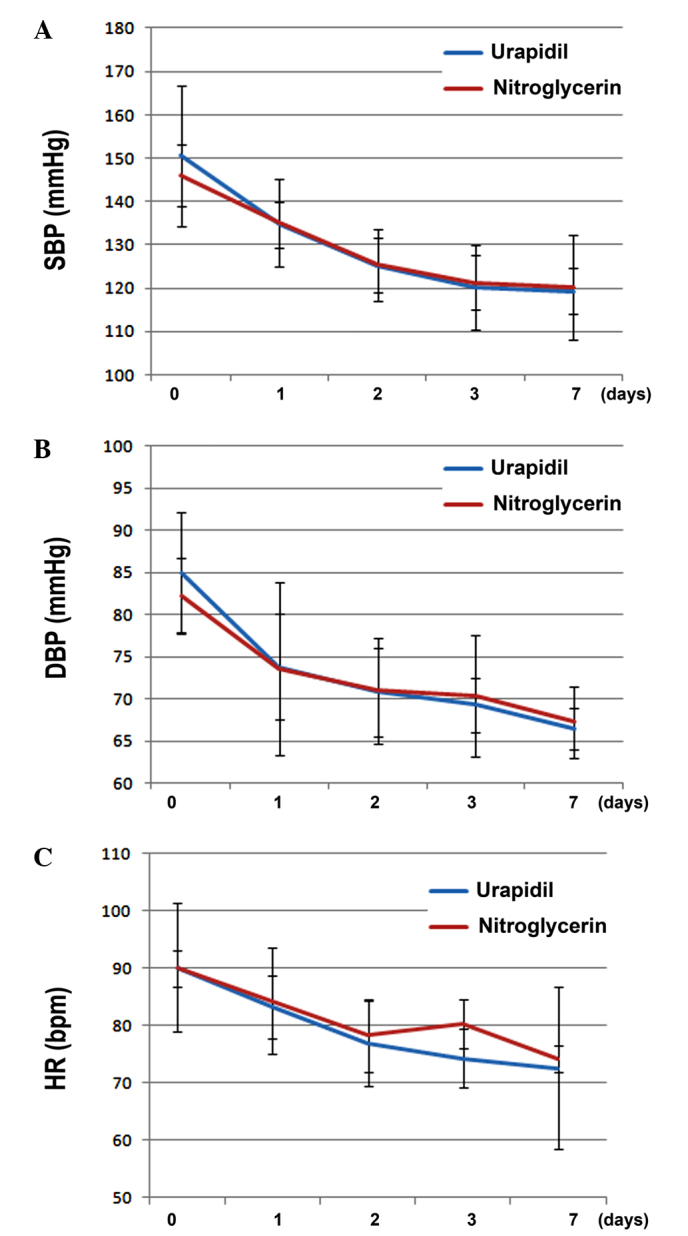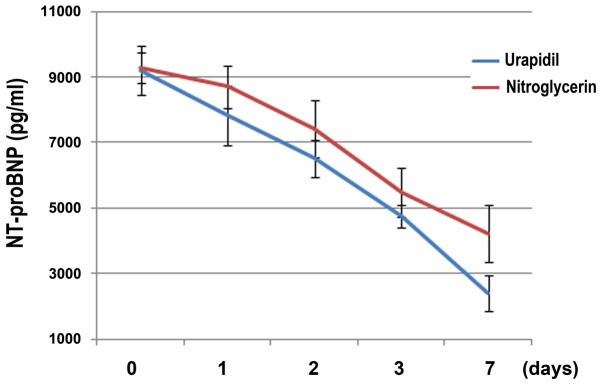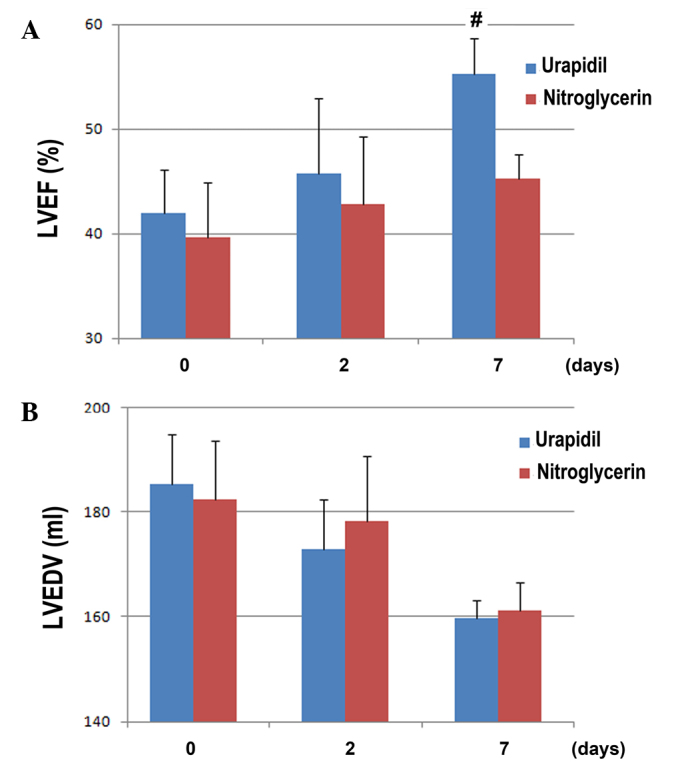
| Size | Price | Stock | Qty |
|---|---|---|---|
| 100mg |
|
||
| 250mg |
|
||
| 500mg |
|
||
| 1g |
|
||
| 2g |
|
||
| 5g |
|
||
| 10g |
|
||
| Other Sizes |
|
Purity: ≥98%
Urapidil HCl, the hydrochloride salt of uradipil which is a sympatholytic antihypertensive drug, is potent α1-adrenoceptor antagonist and 5-HT1A receptor agonist with pIC50 of 6.13 and 6.4 respectively. The FDA has not approved urapidil as of yet, but it is accessible in Europe.
| Targets |
5-HT1A Receptor; α adrenergic receptor; α1-adrenergic receptor ( pIC50 = 6.13 ); α2-adrenergic receptor ( pIC50 = 4.38 )
|
||
|---|---|---|---|
| ln Vitro |
|
||
| ln Vivo |
Urapidil (p.o. or i.v.) results in sedation and decreased tonus in mice and rats[3].
|
||
| Animal Protocol |
|
||
| References |
|
||
| Additional Infomation |
Urapidil is a member of piperazines.
Urapidil has been investigated for the treatment of Hypertension During Pre-Eclampsia. See also: Urapidil hydrochloride (annotation moved to). |
| Molecular Formula |
C20H30CLN5O3
|
|
|---|---|---|
| Molecular Weight |
423.94
|
|
| Exact Mass |
423.203
|
|
| Elemental Analysis |
C, 56.66; H, 7.13; Cl, 8.36; N, 16.52; O, 11.32
|
|
| CAS # |
64887-14-5
|
|
| Related CAS # |
Urapidil; 34661-75-1
|
|
| PubChem CID |
5639
|
|
| Appearance |
White to off-white solid powder
|
|
| Boiling Point |
549ºC at 760 mmHg
|
|
| Melting Point |
156-158ºC
|
|
| Flash Point |
285.8ºC
|
|
| LogP |
1.594
|
|
| Hydrogen Bond Donor Count |
1
|
|
| Hydrogen Bond Acceptor Count |
6
|
|
| Rotatable Bond Count |
7
|
|
| Heavy Atom Count |
28
|
|
| Complexity |
588
|
|
| Defined Atom Stereocenter Count |
0
|
|
| SMILES |
Cl[H].O(C([H])([H])[H])C1=C([H])C([H])=C([H])C([H])=C1N1C([H])([H])C([H])([H])N(C([H])([H])C([H])([H])C([H])([H])N([H])C2=C([H])C(N(C([H])([H])[H])C(N2C([H])([H])[H])=O)=O)C([H])([H])C1([H])[H]
|
|
| InChi Key |
KTMLZVUAXJERAT-UHFFFAOYSA-N
|
|
| InChi Code |
InChI=1S/C20H29N5O3.ClH/c1-22-18(15-19(26)23(2)20(22)27)21-9-6-10-24-11-13-25(14-12-24)16-7-4-5-8-17(16)28-3;/h4-5,7-8,15,21H,6,9-14H2,1-3H3;1H
|
|
| Chemical Name |
6-[3-[4-(2-methoxyphenyl)piperazin-1-yl]propylamino]-1,3-dimethylpyrimidine-2,4-dione;hydrochloride
|
|
| Synonyms |
|
|
| HS Tariff Code |
2934.99.9001
|
|
| Storage |
Powder -20°C 3 years 4°C 2 years In solvent -80°C 6 months -20°C 1 month Note: Please store this product in a sealed and protected environment, avoid exposure to moisture. |
|
| Shipping Condition |
Room temperature (This product is stable at ambient temperature for a few days during ordinary shipping and time spent in Customs)
|
| Solubility (In Vitro) |
|
|||
|---|---|---|---|---|
| Solubility (In Vivo) |
Solubility in Formulation 1: ≥ 1.25 mg/mL (2.95 mM) (saturation unknown) in 10% DMSO + 40% PEG300 + 5% Tween80 + 45% Saline (add these co-solvents sequentially from left to right, and one by one), clear solution.
For example, if 1 mL of working solution is to be prepared, you can add 100 μL of 12.5 mg/mL clear DMSO stock solution to 400 μL PEG300 and mix evenly; then add 50 μL Tween-80 to the above solution and mix evenly; then add 450 μL normal saline to adjust the volume to 1 mL. Preparation of saline: Dissolve 0.9 g of sodium chloride in 100 mL ddH₂ O to obtain a clear solution. Solubility in Formulation 2: ≥ 1.25 mg/mL (2.95 mM) (saturation unknown) in 10% DMSO + 90% (20% SBE-β-CD in Saline) (add these co-solvents sequentially from left to right, and one by one), clear solution. For example, if 1 mL of working solution is to be prepared, you can add 100 μL of 12.5 mg/mL clear DMSO stock solution to 900 μL of 20% SBE-β-CD physiological saline solution and mix evenly. Preparation of 20% SBE-β-CD in Saline (4°C,1 week): Dissolve 2 g SBE-β-CD in 10 mL saline to obtain a clear solution. View More
Solubility in Formulation 3: ≥ 1.25 mg/mL (2.95 mM) (saturation unknown) in 10% DMSO + 90% Corn Oil (add these co-solvents sequentially from left to right, and one by one), clear solution. Solubility in Formulation 4: 50 mg/mL (117.94 mM) in PBS (add these co-solvents sequentially from left to right, and one by one), clear solution; with ultrasonication. |
| Preparing Stock Solutions | 1 mg | 5 mg | 10 mg | |
| 1 mM | 2.3588 mL | 11.7941 mL | 23.5882 mL | |
| 5 mM | 0.4718 mL | 2.3588 mL | 4.7176 mL | |
| 10 mM | 0.2359 mL | 1.1794 mL | 2.3588 mL |
*Note: Please select an appropriate solvent for the preparation of stock solution based on your experiment needs. For most products, DMSO can be used for preparing stock solutions (e.g. 5 mM, 10 mM, or 20 mM concentration); some products with high aqueous solubility may be dissolved in water directly. Solubility information is available at the above Solubility Data section. Once the stock solution is prepared, aliquot it to routine usage volumes and store at -20°C or -80°C. Avoid repeated freeze and thaw cycles.
Calculation results
Working concentration: mg/mL;
Method for preparing DMSO stock solution: mg drug pre-dissolved in μL DMSO (stock solution concentration mg/mL). Please contact us first if the concentration exceeds the DMSO solubility of the batch of drug.
Method for preparing in vivo formulation::Take μL DMSO stock solution, next add μL PEG300, mix and clarify, next addμL Tween 80, mix and clarify, next add μL ddH2O,mix and clarify.
(1) Please be sure that the solution is clear before the addition of next solvent. Dissolution methods like vortex, ultrasound or warming and heat may be used to aid dissolving.
(2) Be sure to add the solvent(s) in order.
| NCT Number | Recruitment | interventions | Conditions | Sponsor/Collaborators | Start Date | Phases |
| NCT03790800 | Completed | Drug: urapidil | Stroke, Acute Cerebrovascular Disorders |
The George Institute for Global Health, China |
March 20, 2020 | Phase 3 |
| NCT03497351 | Completed | Drug: Nicardipine Drug: Urapidil |
General Surgery | Chinese PLA General Hospital | April 15, 2018 | Not Applicable |
 |
|---|
 |
 |